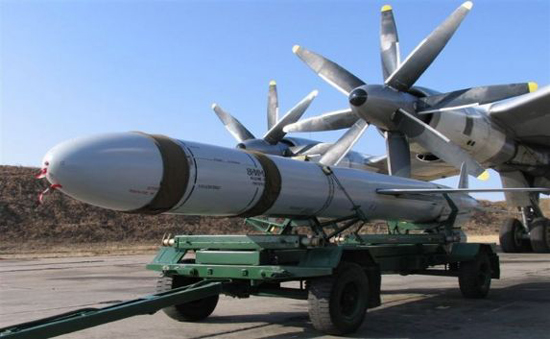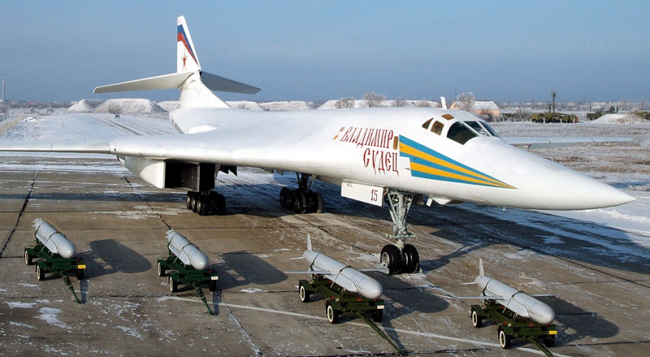
Radug Kh55 cruise missile loaded onto a Tu-95 bomber.
Russia will increase its number of cruise missiles by 30 times by the end of the current decade, Defense Minister Sergei Shoigu said Friday. “We will boost the number of cruise missiles fivefold in the next three years and by 30 times by 2020,” Shoigu told reporters after a meeting of Russia’s Security Council. Are there new cruise missiles in the Russian pipeline and who will operate them?
Most of the cruise missiles developed by the Russians during the Cold War were aimed at fixed strategic targets, such as command centers, radars and missile bases. Naval strike missiles were aimed at ‘decapitating’ enemy forces striking at aircraft carrier. Such missiles were heavy, fast and ‘strategic’. For the 21st century the Russian military will need tactical cruise missiles, similar to those the US and European armies are deploying now – conventionally armed weapons capable of striking targets at very long range, with pinpoint accuracy. Weapons such as the tactical Tomahawk, Storm Shadow or SCALP, and Taurus, have been used since 1991 in almost all conflicts, providing countries with extended operational capability the Russians could not easily duplicate with their current assets. The Russians already have several designs offered for export, including variants of the Club cruise missile, developed for submarines and coastal defense. Other weapons are the Kh55 class air-launched cruise missiles, designed for aerial platforms. The newest version is the the Kh101 developed by Raduga OKB.
The Russian Air Force said last year that it would accept into service in 2013 the new Kh-101 cruise missile, also built by Raduga. This new weapon will be available in two variants – conventional and nuclear armed. Kh-101/102 was developed as a stealthier, more accurate successor of Kh55SM. Unlike its predecessor, the turbojet engine is recessed inside the fuselage, significantly reducing drag and radar signature. The Kh-101 is equipped with a conventional warhead while the Kh-202 carries a nuclear warhead. Its warhead weigh 400 kg (880 pounds) twice the size of the Kh-555. The ranges of Kh-101 is 3,500 – 5,000 km with accuracy of 10 meters. It will employ an inertial navigation system assisted by the Russian satellite based navigation network GLONASS.
However, additional surface and submarine-launched weapons will be joining the fleet and could be accounted for as ‘cruise weapons’. These include anti-ship weapons like the Moskit / BRAHMOS and Yakhont being fielded with surface and coastal defense systems.

The Tupolev Tu-160 Blackjack can carry 12 Kh55SM cruise missiles, loaded on two rotary launchers. The Kh55SM is distinguished


0 komentar
Write Down Your Responses